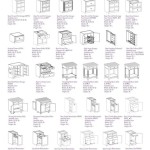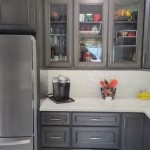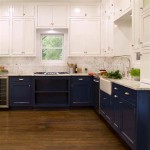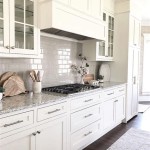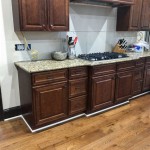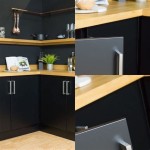Kitchen Cabinets Sears: A Comprehensive Guide
Sears, a once-dominant force in American retail, held a significant market share in home appliances and home improvement, including kitchen cabinetry. While the retail landscape has shifted dramatically in recent years, impacting Sears' presence, understanding the history and legacy of Sears kitchen cabinets offers valuable insights for homeowners considering kitchen renovations or those simply curious about historical trends in kitchen design.
Quality and Construction of Sears Cabinets
Sears offered a variety of kitchen cabinet lines throughout its history, catering to various budgets and design preferences. These cabinets were typically constructed of wood, with options ranging from basic particleboard or plywood construction to more robust solid wood options. The quality and craftsmanship varied depending on the specific line and the era of manufacture. Older, vintage Sears cabinets often showcase higher-quality construction and detailing compared to some later offerings.
Identifying the specific manufacturer of Sears cabinets can be challenging, as the company often contracted with different manufacturers over the years. Researching model numbers and stylistic features can sometimes help determine the manufacturer and approximate production date. This information can be particularly useful for homeowners seeking replacement parts or attempting to match existing cabinetry.
Understanding the materials and construction methods employed in Sears cabinets allows homeowners to assess their durability and potential for restoration. Solid wood cabinets, for instance, are often excellent candidates for refinishing or repainting, potentially extending their lifespan and updating their appearance without requiring full replacement.
Styles and Design Trends
Sears kitchen cabinets reflected the prevailing design trends of their respective eras. From the mid-20th century onwards, Sears offered cabinets in a variety of styles, including traditional, colonial, transitional, and contemporary designs. Examining vintage Sears catalogs and advertisements can provide a glimpse into the evolving aesthetics of kitchen design throughout the latter half of the 20th century.
Common stylistic features found in Sears cabinets from different periods include raised panel doors, recessed panel doors, shaker-style doors, and various decorative hardware options. The color palettes also varied over time, with popular choices ranging from natural wood finishes to painted surfaces in various shades, including white, cream, and various shades of brown and green.
Understanding the stylistic trends prevalent in different eras of Sears cabinetry can be valuable for homeowners seeking to maintain historical accuracy during renovations in older homes. It can also provide inspiration for those wishing to incorporate vintage or retro design elements into their kitchen updates.
Availability and Resale Value
Finding new Sears kitchen cabinets is largely no longer feasible due to the company's diminished retail presence. However, exploring online marketplaces, salvage yards, and antique stores may yield opportunities to acquire vintage Sears cabinets for restoration projects or unique design applications.
The resale value of Sears cabinets varies widely depending on factors such as age, condition, style, and materials. Well-preserved vintage cabinets constructed of high-quality materials and featuring desirable stylistic details may hold considerable value for collectors or homeowners seeking authentic period pieces. More common or mass-produced cabinets in average condition may have limited resale value.
Homeowners considering purchasing a property with existing Sears cabinets should carefully assess their condition and suitability for their needs and aesthetic preferences. While some cabinets may be excellent candidates for restoration or repurposing, others might require replacement depending on their condition and the homeowner's desired design direction.
Considering Sears Cabinets for Renovation
While finding brand new Sears kitchen cabinets is unlikely, the possibility of repurposing or restoring existing Sears cabinets can be a viable option for homeowners. This can be a cost-effective solution for updating a kitchen while potentially preserving historical elements or incorporating unique vintage design features.
Before undertaking a renovation project involving existing Sears cabinets, a thorough assessment of their condition is crucial. Inspecting the cabinets for structural integrity, damage, and signs of wear and tear will help determine the feasibility and potential cost of restoration. Factors such as the extent of required repairs, the availability of replacement parts, and the desired final finish will influence the overall project scope.
Repurposing existing cabinets can also be a creative and sustainable approach to kitchen renovation. Sears cabinets, particularly those constructed of solid wood, can be refinished, repainted, or even reconfigured to create a fresh and updated look while minimizing waste and preserving historical value.

1958 Sears Kitchen Cabinets And More 32 Page Catalog Retro Renovation

1958 Sears Kitchen Cabinets And More 32 Page Catalog Retro Renovation

1958 Sears Kitchen Cabinets And More 32 Page Catalog Retro Renovation Vintage

1958 Sears Kitchen Cabinets And More 32 Page Catalog Retro Renovation

Sears Kit House Honor Bilt Kitchen 1920 Homes Vintage Plans

New Kitchen In A Sears House Old Journal

Top 6 Cabinet Trends To Try

New Kitchen In A Sears House Old Journal
The Rise Of Modern Kitchen Architect

1958 Sears Kitchen Cabinets And More 32 Page Catalog Retro Renovation
Related Posts

